What are the must-have items for indoor lacrosse. How to choose the right helmet for maximum safety. Which protective gear is crucial for indoor play. How to ensure your equipment meets league standards.
Choosing the Perfect Indoor Lacrosse Helmet: Safety First
When it comes to indoor lacrosse, safety should always be your top priority. A properly fitted helmet is crucial for protecting players from potential head and facial injuries. How can you ensure you’re selecting the right helmet for indoor play?
First and foremost, look for helmets that meet NOCSAE (National Operating Committee on Standards for Athletic Equipment) standards. These helmets have undergone rigorous testing to ensure they provide adequate protection during intense gameplay.
Finding the Right Fit
Proper sizing is essential for maximum protection. How do you determine the correct helmet size? Here are some key points to consider:
- Measure your head circumference accurately
- Consult brand-specific size charts (e.g., Cascade, Warrior)
- Ensure a snug fit with about two finger widths between the brow and helmet
- Check that the chin strap fits securely around the chin and jawbone
- Verify that the helmet doesn’t rock side to side or front to back when properly fitted
Remember, relying on hat size or guesswork isn’t sufficient. Take the time to measure and find the size designed specifically for your head shape and dimensions.

Exploring Different Brands and Models
While Cascade and Warrior are popular choices, don’t overlook other reputable brands like STX, Maverik, and Bauer. Each brand offers unique features and fits that may better suit your individual needs. Consider these factors when comparing options:
- Helmet shape (e.g., Warrior tends to fit narrower, while Cascade has more rounded profiles)
- Visibility through the eyeport
- Overall comfort and feel
Many retailers allow you to try on helmets before purchasing, so take advantage of this opportunity to find your perfect fit.
Fine-Tuning Your Helmet: Chin Straps and Padding
Even with the correct shell size, customizing your helmet’s fit is crucial for optimal protection. How can you achieve the perfect fit?
Chin Straps
Opt for adjustable chin straps with snaps to achieve the ideal tension without discomfort. A properly fitted chin strap should:
- Keep the helmet securely in place during play
- Allow for easy adjustment
- Provide comfort without restricting movement
Padding
Helmet padding comes in various thicknesses to help you fine-tune the fit. Consider these points when selecting padding:

- Choose padding that fills any gaps between your head and the helmet shell
- Ensure the padding doesn’t compress excessively, which could reduce protection
- Look for moisture-wicking materials to enhance comfort during intense play
Work closely with your lacrosse equipment supplier to find the ideal combination of chin strap and padding for your specific needs.
Maintaining Your Helmet for Long-Lasting Protection
Proper care and maintenance of your lacrosse helmet are essential for ensuring its effectiveness throughout the season. How can you keep your helmet in top condition?
- Inspect regularly for cracks, dents, or other damage
- Replace the helmet if any structural issues are found
- Clean the helmet according to manufacturer guidelines
- Store in a cool, dry place away from direct sunlight
- Replace the helmet every few years, even if it appears undamaged
Remember, even the best helmet offers limited protection if not worn correctly. Coaches and officials should enforce proper helmet use, including securely fastened chin straps and correct positioning on the head.
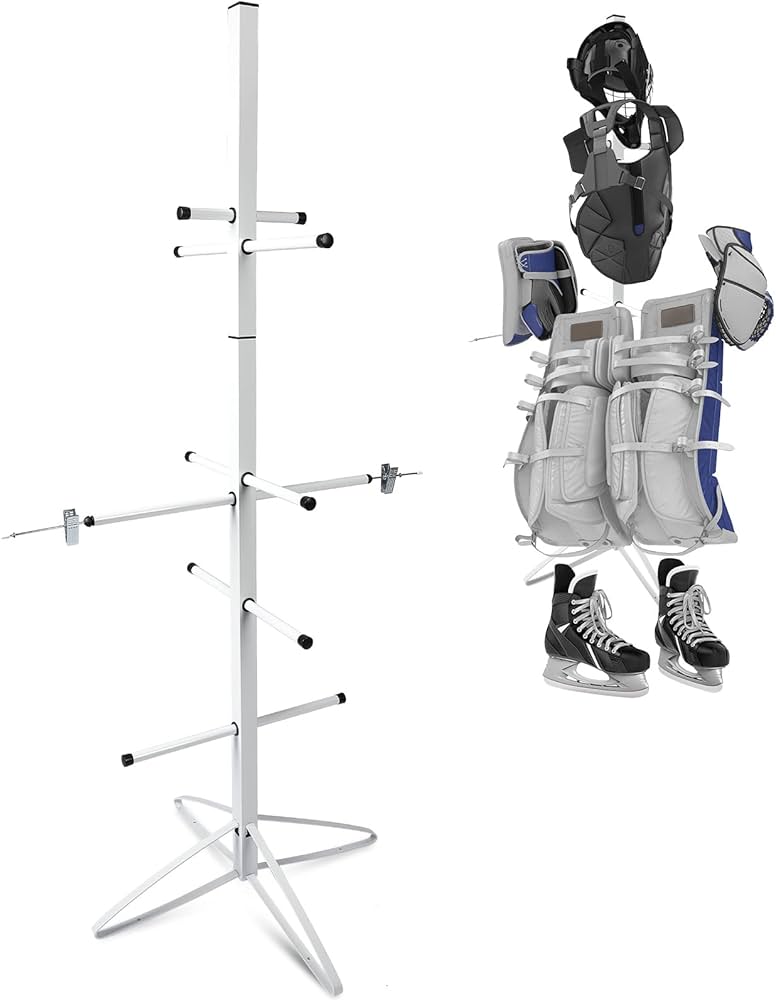
Beyond Helmets: Essential Protective Gear for Indoor Lacrosse
While helmets are crucial, a complete set of protective gear is necessary for safe indoor lacrosse play. What other equipment should players have?
Gloves
Lacrosse gloves protect hands and wrists from checks and impacts. Look for gloves that offer:
- Ample padding on the back of the hand and fingers
- Flexibility for optimal stick control
- Breathable materials to reduce sweat buildup
- Proper fit to prevent slipping during play
Shoulder Pads
Shoulder pads are essential for absorbing body checks and protecting the upper body. Consider these factors when choosing shoulder pads:
- Coverage area (ensure they protect shoulders, chest, and upper back)
- Flexibility for unrestricted movement
- Lightweight design for comfort during extended play
- Proper fit to prevent shifting during intense action
Arm Pads
Arm pads shield players from slashes and checks. Look for arm pads that offer:
- Adequate coverage from elbow to wrist
- Secure straps to prevent slipping
- Breathable materials for comfort
- Flexibility to allow full range of motion
Athletic Cup
An athletic cup is crucial for protecting sensitive areas from errant shots or checks. Ensure you choose a cup that:
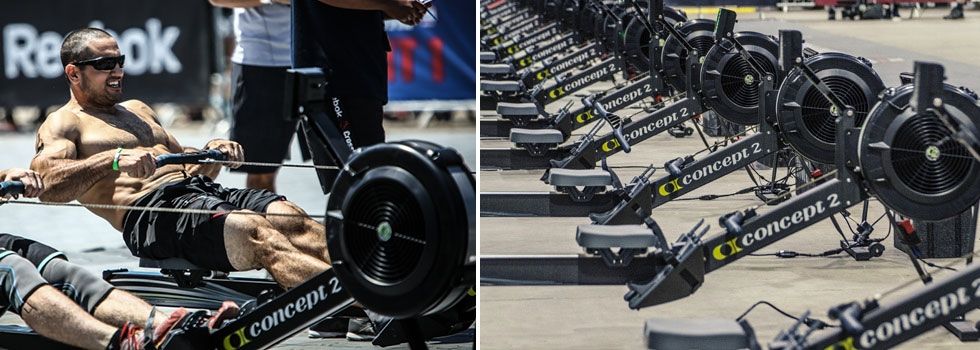
- Fits comfortably and securely
- Provides adequate coverage
- Is made from durable, impact-resistant materials
Selecting the Right Lacrosse Stick for Indoor Play
Your lacrosse stick is your primary tool on the field. How do you choose the right one for indoor play?
Stick Length
Indoor lacrosse typically requires shorter sticks than outdoor play. Consider these guidelines:
- Attack and midfield players: 40-42 inches
- Defensive players: 52-72 inches (check league regulations)
- Goalies: 40-72 inches (personal preference within league rules)
Head Design
Indoor lacrosse heads often differ from outdoor versions. Look for heads that offer:
- Narrower profile for quicker ball control
- Stiffer construction to withstand indoor play’s physical nature
- Shaped pocket for improved ball retention
Shaft Material
Choose a shaft material that balances durability and weight:
- Aluminum: Lightweight and affordable, but may dent
- Titanium: Extremely light and strong, but expensive
- Composite: Offers a good balance of weight, strength, and feel
Footwear for Indoor Lacrosse: Traction and Support
Proper footwear is crucial for performance and injury prevention in indoor lacrosse. What should you look for in indoor lacrosse shoes?
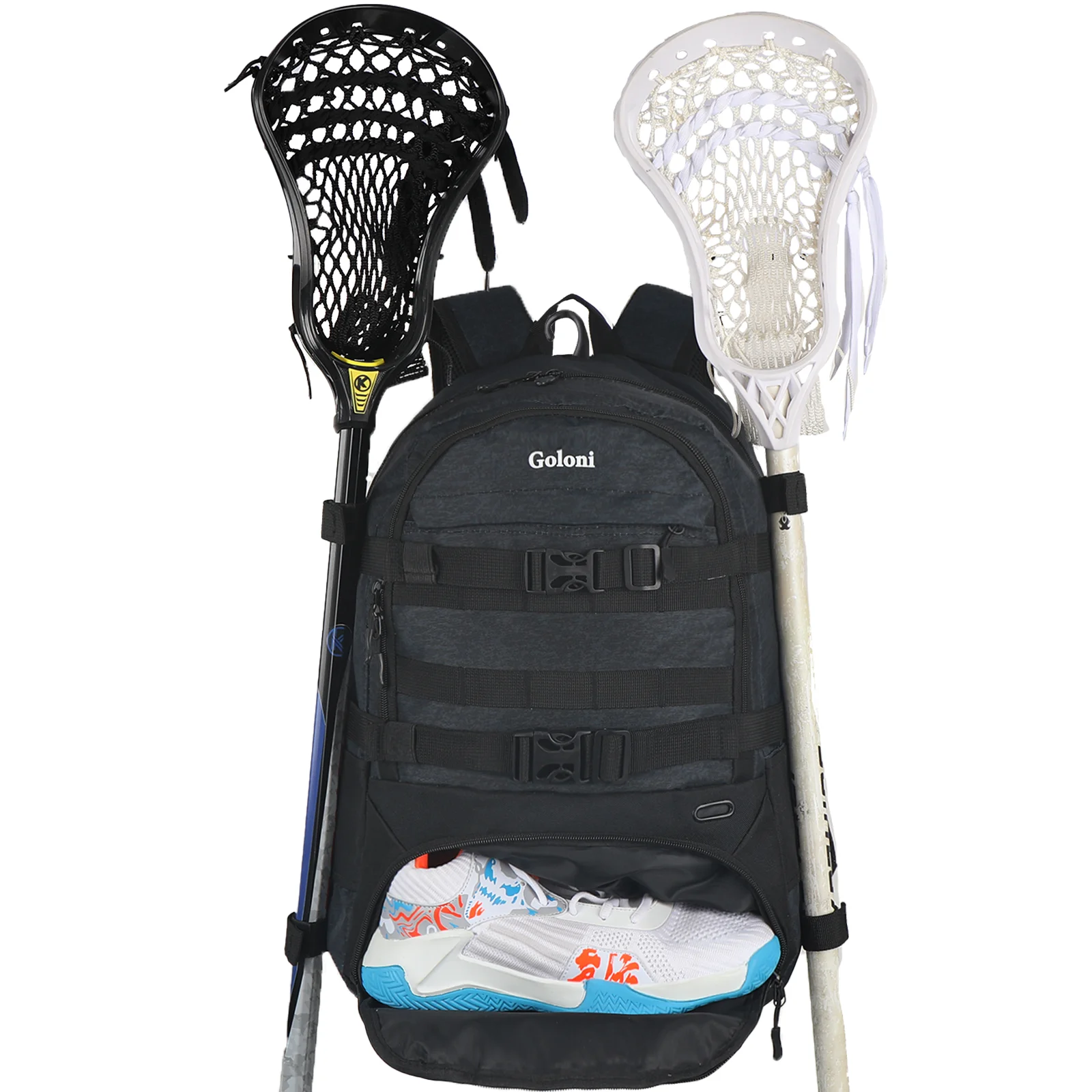
Traction
Indoor surfaces require specific traction patterns. Consider shoes that offer:
- Non-marking soles for indoor court use
- Multidirectional traction patterns for quick cuts and changes of direction
- Gum rubber or similar materials for optimal grip on indoor surfaces
Support and Stability
Indoor lacrosse involves rapid movements and direction changes. Look for shoes that provide:
- Adequate ankle support to prevent rollovers
- Reinforced lateral support for side-to-side movements
- Cushioning for impact absorption during intense play
Fit and Comfort
Ensure your indoor lacrosse shoes fit properly:
- Allow about a thumb’s width of space in the toe box
- Choose a snug fit around the midfoot and heel to prevent slipping
- Consider shoes with breathable materials to keep feet cool and dry
Additional Equipment for Indoor Lacrosse Success
Beyond protective gear and sticks, what other equipment can enhance your indoor lacrosse experience?
Practice Balls
Invest in a set of indoor-specific lacrosse balls:

- Softer composition to reduce potential damage to indoor facilities
- Bright colors for improved visibility in indoor lighting
- Consider weighted balls for strength and skills training
Rebounders
A rebounder can be an invaluable training tool for indoor practice:
- Allows for solo practice of passing and catching
- Helps improve reaction time and hand-eye coordination
- Choose a portable model for easy setup in limited indoor spaces
Equipment Bag
A quality equipment bag keeps your gear organized and protected:
- Look for bags with separate compartments for wet and dry gear
- Consider ventilated sections to reduce odor buildup
- Choose a bag with sturdy wheels for easy transport
By ensuring you have all the essential equipment and gear properly fitted and maintained, you’ll be well-prepared for a successful indoor lacrosse season. Remember to consult with coaches, experienced players, and equipment specialists to find the best options for your individual needs and playing style.
Properly Fitted Indoor Lacrosse Helmets For Safety
As the indoor lacrosse season gets underway, it’s important for players, coaches, and parents to ensure proper safety equipment is being used. One of the most critical pieces is a properly fitted helmet that meets NOCSAE standards. While helmets can’t fully prevent concussions, they can help reduce the risk of serious head and facial injuries. So let’s explore some key factors in finding the right indoor lacrosse helmet for you or your athlete.
Getting the Proper Size
Many parents simply buy a helmet based on their child’s hat size or make a guess. However, lacrosse helmets come in a range of sizes based on measurements in centimeters or inches. Brands like Cascade and Warrior provide detailed size charts to help you find the best fit. The helmet should be snug but not too tight. About two finger widths between the brow and helmet is ideal. The chin strap should fit snugly around the chin and jawbone as well. The helmet should not rock side to side or front to back on the head if properly fitted. Take the time to carefully measure and find the size designed for your head rather than relying on guesses.
Trying Different Brands and Models
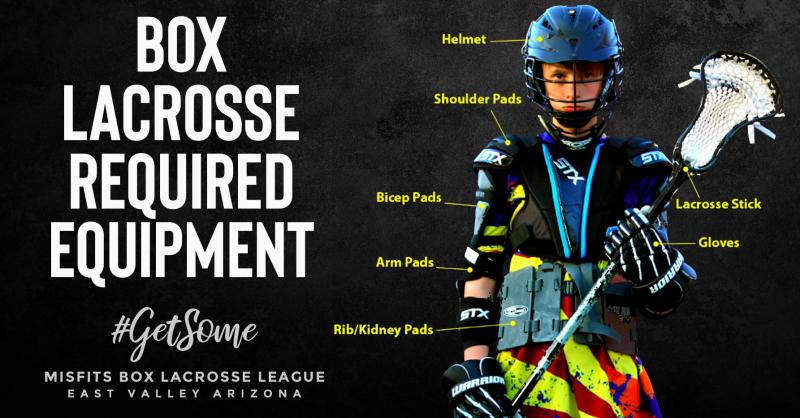
While Cascade and Warrior dominate lacrosse helmet sales, there are also quality options from STX, Maverik, and Bauer. The various brands use slightly different sizing scales and shape profiles. For example, Warrior helmets tend to fit narrower while Cascade has more rounded dome shapes. Don’t be afraid to try on different brands and models to find the one that feels right. Many lacrosse retailers allow you to try on helmets before buying. Be sure the eyeport allows for good visibility without blocking the field of vision for the athlete. Trying on different options helps you find the best combination of comfort, protection and visibility.
Getting the Right Chin Strap and Pads
Even with the right shell size, you’ll need adjustable chin straps and pads to customize the fit. Most lacrosse helmets come with basic pads and straps, but you may need to purchase better options separately to dial in the fit. Chin straps with adjustable snaps help get just the right tension without choking the athlete. Padding comes in various thicknesses to tighten or loosen the helmet fit as needed. Work with your lacrosse equipment supplier to identify the best chin strap and pad combination to get that snug, wobble-free fit for the helmet.
Proper Use and Care
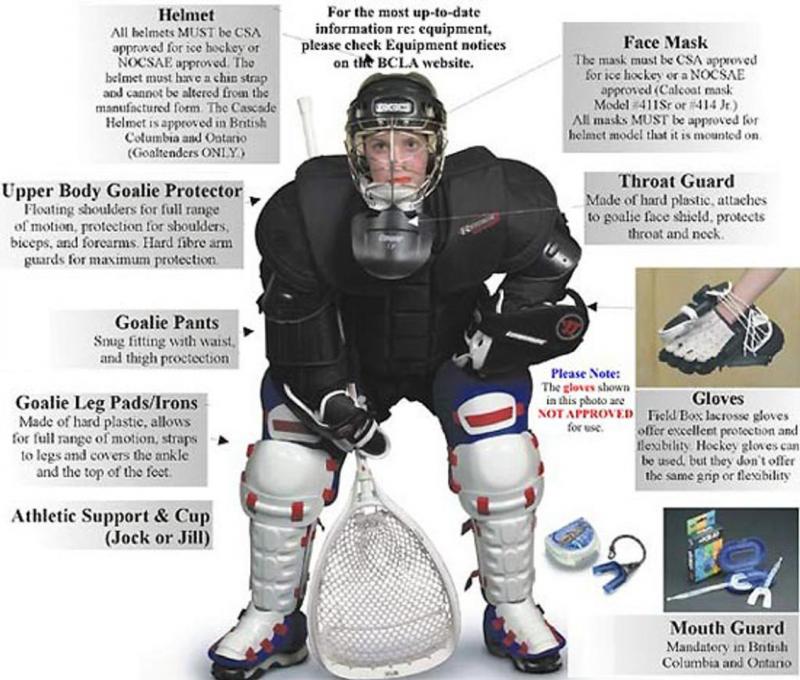
Even the best helmet offers little protection if not worn properly. Coaches and officials must insist that chin straps are buckled and the helmet sits squarely on the head. Never push, shove or grab a player by the helmet. Inspect helmets regularly for cracks or damage and replace as needed. Helmet technology and materials continue to evolve each season. While helmets have a useful life beyond one season, don’t risk an old deteriorating helmet and upgrade every few years. Following safety, care and maintenance guidelines helps ensure your lacrosse helmet sustains impacts while protecting your head.
Cutting Down Risk
Lacrosse continues to grow rapidly in North America and indoor leagues bring intense action in close quarters. With players constantly cutting, dodging and jockeying for the ball, head injuries will occur. While helmets reduce concussion risks, they cannot prevent them entirely. Coaches must teach proper checking technique along with penalizing dangerous plays. Physical conditioning to strengthen neck muscles also helps limit injuries. Medical professionals recommend baseline neurocognitive testing for youth to help assess concussion effects. A properly fitted helmet represents just one aspect of promoting safety and reducing head injury risks in fast-paced box lacrosse play.
Beyond helmets, lacrosse players need a full complement of protective gear from gloves to padding for safe play. Consult your local lacrosse pro shop on sizing and options for each piece of equipment. Take time to find comfortable gear that allows freedom of movement while also absorbing checks and impacts. Don’t forget other essentials like lacrosse balls, looking nets, bags and balls stoppers for full preparation. Shop off-season sales now to get geared up for a great indoor lacrosse season.
Lacrosse Net Dimensions And Ideal Sizes
Whether you’re setting up new lacrosse nets or checking your existing goals, knowing the proper sizing is crucial. While high school, college, and pro lacrosse have standardized net dimensions, youth and recreational leagues use a variety of sizes. Let’s break down the ideal lacrosse net measurements for each level of play.
NCAA and Professional Lacrosse Net Sizes
For college and pro lacrosse, including Major League Lacrosse (MLL) and Premier Lacrosse League (PLL), the goals are 6 feet high by 6 feet wide. The opening at the front measures just over 4 feet across diagonally. The net bag hanging in the back is around 7 feet deep to absorb hard shots. These full-size nets are secured by metal pipes or frames. The overall footprint is 6 feet wide by 6 feet tall by 7 feet deep once fully assembled based on NCAA and pro league rules.
High School Lacrosse Nets
Most high school programs use the same 6×6 foot lacrosse nets as the college and pro levels. But some leagues and divisions modify the sizing slightly, usually going a bit smaller. For example, girls’ lacrosse goals may be closer to 5×5 feet in some regions. The NFHS officially recommends the NCAA size for high school lacrosse, but modified sizing is seen in places.
Youth and Beginner Lacrosse Net Sizes
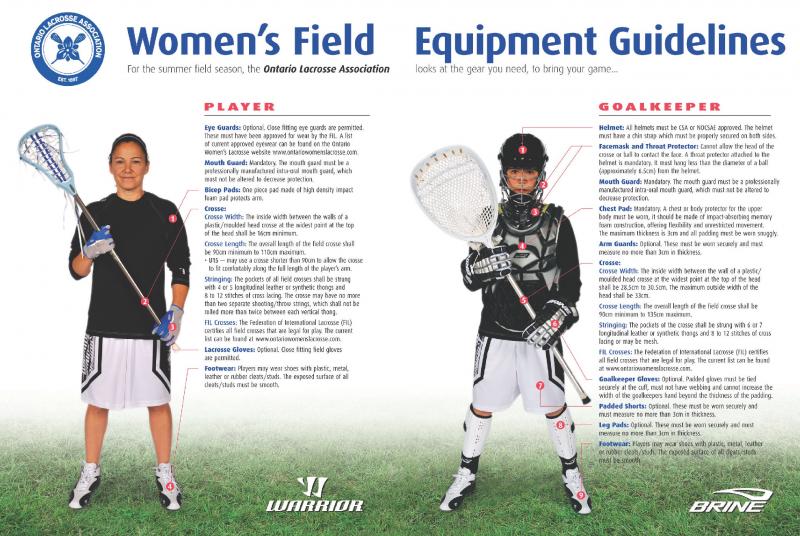
For entry-level play, full-size lacrosse nets can be a bit oversized. Most youth leagues use small goals that are around 4×4 feet or 32 inches square. These still allow for passing and shooting skill development but are sized for younger players. Some youth goals may be as small as 3×3 feet for very young beginners. Backyard lacrosse nets also come in small versions, some as portable pop-up styles. While they don’t match regulation sizing, they allow young players to hone skills.
Box Lacrosse Net Dimensions
Since box lacrosse is played indoors, the playing area is more compact than field lacrosse. Box lacrosse goals are typically 4×4 feet square, with a shallower 4 foot net bag depth. The indoor goals are secured to boards similar to hockey nets. Outdoor box lacrosse leagues may use slightly larger 5×5 feet nets. But the reduced space of box lacrosse necessitates smaller nets compared to field lacrosse standards.
Ensuring Proper Sizing
When setting up lacrosse nets, be sure to follow the guidelines for your specific league and level of play. Measure the full frame, net width and bag depth to verify the goal meets regulations. Field nets should be anchored securely to prevent tipping. Indoor box nets attach to dasher boards with strong mounting plates to survive hard impacts. Take time to properly measure and install goals before each season to ensure safety and compliance.
Net Fibers and Mesh Styles
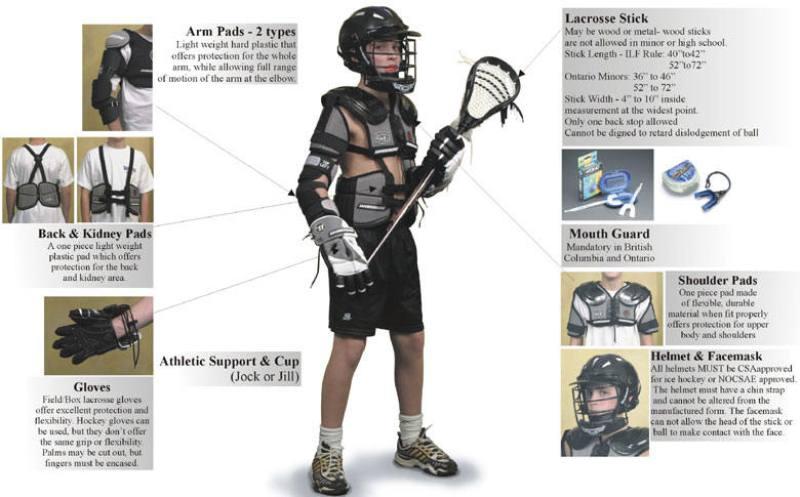
While dimensions dictate the size, the net itself comes in varying mesh patterns and materials. Nylon nets with polyester fibers offer durability at a moderate cost for youth and high school levels. For college and pro levels, choose HIGH-grade nylon/polyester mix nets or upgrade to softer polyethylene for maximum performance. Weather-resistant mesh weaves improve seasonal longevity. Get the right-sized lacrosse goal framed and choose high-end net fibers suitable for your level of competitive play.
Along with proper net sizing, lacrosse goals require anchoring, net attachment systems and net replacement kits for ongoing maintenance. Be sure to have tamper-resistant locking devices, net clips, quality drawstrings and backup netting on hand. Take time before each season to ensure your lacrosse nets meet the size, safety and durability needs of the sport. With the right goals set up on the field or in the box, you’re ready to face off and play lacrosse!
Regulations For Box Lacrosse Balls
For both box and field lacrosse, specialized balls are used to match the style of play. Box lacrosse features harder shots in tight quarters, necessitating balls that can withstand impacts. Let’s look at the key regulations and standards for box lacrosse balls across various leagues and levels of play.
Box Lacrosse Ball Sizing
Nearly all box lacrosse is played with balls measuring 2 inches in diameter. This is smaller than the 2.25-2.75 inch range seen in men’s field lacrosse balls. The compact 2-inch diameter helps players handle and cradle the ball in tight spaces. Most box balls weigh around 5 ounces, similar to field lacrosse balls. The rubber construction is firm and rigid to hold up under hot indoor shots.
NCAA Standards
For college club box lacrosse played under NCAA guidelines, balls must be 2 inches in diameter and made of solid rubber. The ball color should be easy to see on the floor, usually orange or bright yellow. White box lacrosse balls are also NCAA-approved for visibility. There are no specific NCAA standards for box ball hardness or compression at this time.
NLL Regulations

In the professional National Lacrosse League, standardized balls are used league-wide. NLL balls measure 2 inches in diameter and 5 ounces in weight. An official NLL ball has a bounce of 3 feet when dropped from 60 inches high. The balls feature a durable solid rubber cover that withstands repeated impacts against boards and the flooring.
CLA and FIL Standards
Canada’s CLA leagues and FIL international box lacrosse follow similar rules to the NLL. Box balls must be 2 inches in diameter with a rigid rubber cover. However, FIL allows slightly softer balls with a 2.5 foot bounce minimum when dropped from 60 inches high. This provides a bit more cushioning during play.
High School and Youth Box Balls
For most recreational and high school box lacrosse, any solid 2-inch diameter ball can be used. Softer recreational-grade balls help prevent injuries during checking and offer better handling. Youth box balls may use softer covers with sponge rubber cores for safety. While specific standards vary, 2-inch diameter uniformed sized balls are mandated.
Ball Control and Shooting
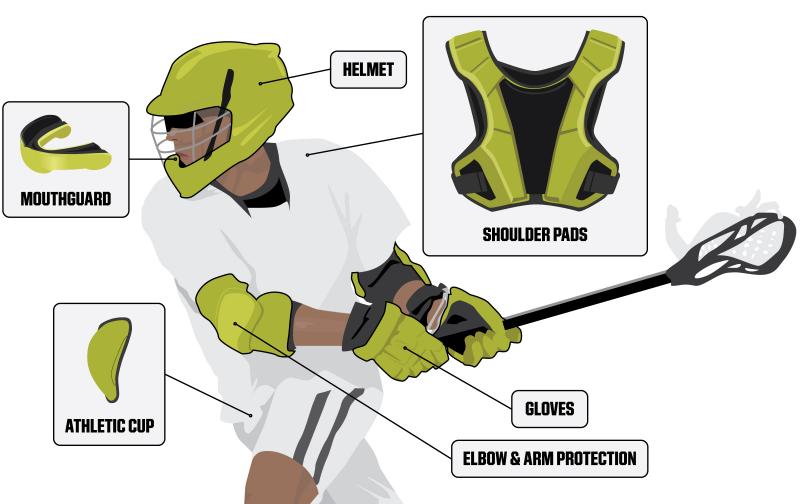
The small size yet solid construction of box lacrosse balls requires players to cradle and handle them differently than larger field balls. Developing “box ball” skills takes time. The tight rubber cover also increases ball speed when shooting, keeping goalies on their toes. Purpose-made box lacrosse balls allow the indoor game to thrive across leagues and levels.
Along with ball regulations, box lacrosse depends on goals sized for tight spaces and protective gear tailored for physical play. Field lacrosse and hockey players transitioning to indoor box lacrosse need to invest time adapting to the quicker game with harder shots. Start by picking up a few box lacrosse balls to get a feel for the sport’s unique ball handling, passing and shooting mechanics.
Types of Box Lacrosse Heads And Sticks
Is Your Indoor Lacrosse Gear Up to Snuff This Season?: Check Out These Essential Lacrosse Equiment Must-Haves
As the indoor lacrosse season gets underway, it’s important for players to make sure they have the right gear to perform at their best. Having high-quality equipment that is sized and adjusted properly goes a long way toward success on the box lacrosse court. Let’s take a look at some of the essential items every lacrosse player needs in their bag this season.
Indoor Lacrosse Helmet
A box lacrosse helmet is arguably the most important piece of protective equipment. Sticks and balls are flying around at high speeds in an enclosed area, so head protection is a must. Lacrosse helmets are designed with extra padding and protection around the ears and back of the head, while still allowing for good visibility and ventilation. Fit is key – be sure your helmet sits comfortably snug on your head before stepping on the court. Adjust the chin straps and side pads until you’ve achieved a customized, secure fit. This will maximize protection and prevent the helmet from shifting during intense play.
Lacrosse Stick Dimensions
Having a lacrosse stick with the proper dimensions is vital for ball control, accurate passing and shooting. Box lacrosse sticks are typically 40-42 inches long, with heads ranging from 9 to 12 inches wide. Length and head width vary by player position and preference. For example, attack players often opt for more narrow heads for precision, while defenders tend to use wider heads to help intercept passes. Custom stringing and pocket depth also impact ball control. Test out different stick configurations to find your ideal combination of length, head width, stringing and flex.
Lacrosse Ball

Believe it or not, not all lacrosse balls are created equal! Rubber indoor lacrosse balls have a slightly softer feel and more grip than solid plastic field lacrosse balls. The rubber helps the ball stick to stick heads during catches, cradles and scooping ground balls in tight quarters. Less experienced players may opt for soft lacrosse balls for practice, as they have a little more give when hit. Match your ball to your playing environment and skill level for optimal control.
Lacrosse Net Dimensions
Proper net sizing creates a box lacrosse experience that mirrors regulation play. Youth and high school players should use a net with dimensions of 4×4 feet. College and professional men’s lacrosse nets measure 4×6 feet. For women’s college and pro box lacrosse, nets are a bit smaller at 4×5 feet. Net shape also varies – pointed bottom nets help keep balls in play, while flat bottom nets work well for practice shooting drills. Suspend your net from a metal frame or traditional wooden box frame to complete the box lacrosse setup.
Box Lacrosse Helmet
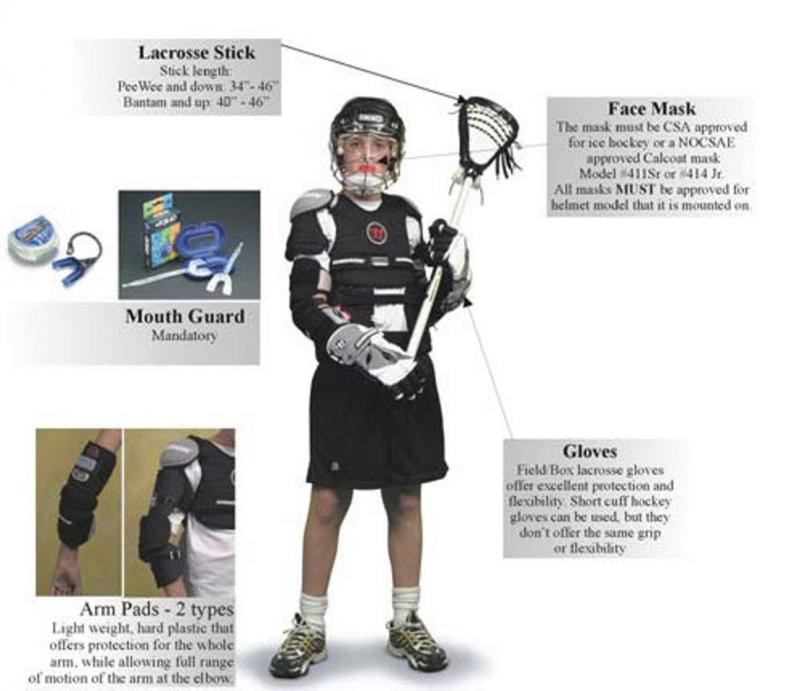
In addition to protective gear, having the right offensive equipment enhances scoring opportunities. Box lacrosse heads give players excellent ball control for diving shots, quick sticks and winding cradles in tight space. Offset heads provide flexibility when positioning your hands for picking corners. Box lacrosse shafts are typically made of lightweight titanium or scandium metal for maximum strength and minimal weight. For stringing, nylon laces allow for adjustable pocket placement to adapt to your playing style. Dial in your box lacrosse head and shaft for fluid offense this season.
Best Shoes for Box Lacrosse
Your footwear is often an overlooked piece of essential lacrosse equipment. The right shoes provide grip for quick cuts, traction for scooping up ground balls, and ankle support when jockeying for position in the crease. Many players opt for turf shoes or cross-trainers when competing indoors. The key is finding a shoe with a lugged sole to prevent sliding on hard indoor surfaces. Break in shoes before game time to maximize comfort and prevent blisters or distractions while you play.
Lacrosse Ball Stopper Net
While not a requirement, lacrosse ball stopper nets are extremely helpful during practice and warmups. Placing one of these nets behind a regular lacrosse goal captures wide shots and keeps the ball confined to your playing area. Without a stopper, you’ll spend time chasing down errant shots and loose balls – better to keep the action contained. For indoor facilities or tight outdoor playing spaces, a stopper net is a worthwhile investment to maximize time spent productively passing, catching and shooting.
By taking inventory of your gear and making upgrades where needed, you’ll be off to a running start this box lacrosse season. Be sure to try out new equipment and make adjustments during early practices to dial in the proper fit and feel. With the essential lacrosse gear in your bag, you’ll be poised for success on the indoor court!
Lacrosse Stick Dimensions And Measurements
As the crisp autumn air signals the start of a new indoor lacrosse season, players scramble to ensure their gear is up to snuff before hitting the box. While outdoor and indoor lacrosse share many similarities, the differences in playing surface, boundaries, and style of play make specialized equipment a must for indoor competitions. From sticks to helmets to shoes, we’ve rounded up some key lacrosse equipiment measurements and must-have features to help you feel confidence in your game this season.
Indoor Lacrosse Helmet
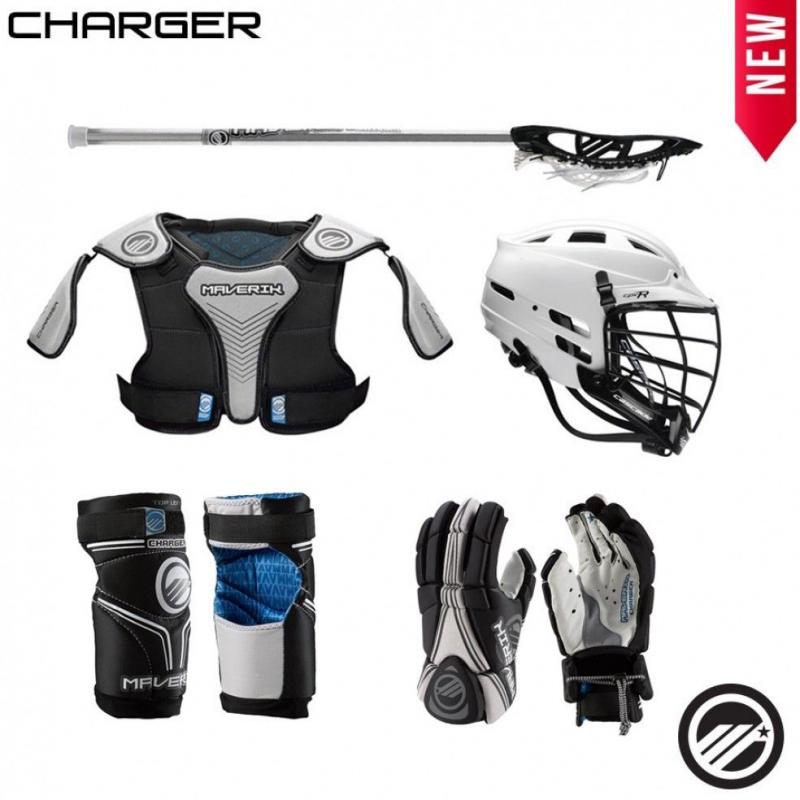
While outdoor lacrosse permits some helmet variation, indoor lacrosse requires a specific type of helmet for optimal safety. Helmets designed for box lacrosse have a rounded shell shape to deflect ball contact from close defensive play near the boards. Chin straps are essential to keep the helmet securely on the head through physical gameplay. Look for a box lacrosse helmet with thick foam padding around the jaw line and chin in anticipation of high-impact checks. Helmets weigh around 1.8 pounds and must have a face mask made of sturdy titanium alloy or steel for ball protection.
Lacrosse Stick Dimensions
Box lacrosse sticks have specialized dimensions for ball control in tight spaces. The head is more pinched, sitting around 4 to 5 inches wide so players can cradle the ball close. Box lacrosse stick handles range from 30 to 40 inches long to allow close play by the boards. Indoor sticks also have more defined sidewalls with a deeper pocket depth for expert handling. Offensive players often prefer a stick with a closed sidewall and nylon strings in the pocket, while defensive players opt for an open sidewall with leather lacings. Having an indoor and outdoor stick ensures you have the right tool for each style of play.
Lacrosse Ball Stopper Net

A ball stopper net is a must-have training tool for indoor lacrosse. Attaching behind a home goal or on a rebounder, the square netting catches wide shots to prevent chasing stray balls. The stopping net dimensions stretch about 6 feet wide by 6 feet tall to wrangle even the most wild shots. Heavy-duty polyester or nylon material stands up to high-velocity shots without ripping. Some ball stopper nets also feature targets printed on the front to sharpen shooting accuracy.
Lacrosse Net Dimensions
Indoor lacrosse goals measure much smaller than their outdoor counterparts. Youth box lacrosse nets are typically 3 feet wide by 3 feet tall. Professional men’s lacrosse goal dimensions grow to 4 feet wide by 4 feet tall. Pro women’s goals land around 4.5 feet wide by 4 feet tall. Nets must be made of white nylon cord netting for visibility. Steel goal frames allow for dismantling to bring the net indoors. Portable lacrosse goals with folding brackets offer easy transport and storage when not in use.
Box Lacrosse Ball
Made of solid rubber, indoor lacrosse balls have some key differences from outdoor balls. Weighing 5 to 5.25 ounces, box lacrosse balls are slightly heavier for more controlled passes and shots in close quarters. The balls measure 7.75 to 8 inches in circumference, with a bounce durometer of around 65. Using a ball designed for box lacrosse helps achieve true rolls, rebounds, and ball movement when shooting or passing off the boards during indoor play.
Box Lacrosse Heads
Specialized box lacrosse heads feature defined sidewalls that help scoop up ground balls and protect ball possession. Heads for indoor play have an open design on top for expert handling, with more string holes around the scoop. Experienced players may prefer a lacrosse head with a closed sidewall for extra ball control. Offset heads shift the sidewall to one direction, allowing players to get in close to the net. Box lacrosse heads must sit around 6 to 8 inches wide at their widest point. Fibreglass composite or plastic heads offer durability while still being lightweight.
Best Shoes for Box Lacrosse

The right footwear provides stability during fast indoor gameplay near the boards. Look for lacrosse shoes with a flat-soled or minimal cleat tread that sticks to indoor turf surfaces without slipping. Synthetic leather uppers resist scuffs from board contact. An internal shank lends midfoot support when pivoting and changing direction. Many players opt for lightweight mid or high-top box lacrosse shoes for ankle stability. Durable toe caps protect against stray sticks and balls. Swapping cleats for turf shoes allows lacrosse players to be performance-ready when transitioning to indoor play.
Gearing up with equipment designed for the unique demands of box lacrosse gives players the best opportunity to perform. Keeping stick dimensions, helmet protection, and foot traction in mind allows athletes to step on the field with confidence. Focus on the game rather than the gear by ensuring your indoor lacrosse equipment is ready for competition.
Protective Box Lacrosse Helmets

As autumn arrives, lacrosse players start transitioning their gear for the move indoors. While field and box lacrosse share some commonalities, key differences in the style of play, space, and physicality necessitate specialized equipment to be game-ready. From protective helmets to traction shoes, we’ve compiled the essential box lacrosse gear you need for hard-hitting indoor competition and training this season.
Box Lacrosse Helmet
Helmet regulations are far more stringent in box lacrosse compared to field lacrosse. Indoor rules mandate a specific style of rounded helmet to protect the head from contact with sticks, balls, and boards. Look for a sturdy chin strap to keep the helmet securely in place when jostling with opponents. Robust padding around the jaw and chin is essential, as box style play leads to more frequent face shots. The best box lacrosse helmets utilize dense foam or gel padding to absorb high-impact collisions. Helmets designed for indoor lacrosse typically weigh 1.5 – 2 lbs. A durable facemask made of steel or titanium alloy blends strength with lightweight wearability.
Appropriately Sized Lacrosse Sticks
Maneuvering a lacrosse stick in tight spaces requires a personalized design. Box lacrosse sticks have narrower heads, usually 4-5 inches across to let players cradle the ball snugly. Handles range from 30-40 inches long, allowing players to poke check opponents in close quarters near the boards. Box lacrosse heads feature more pronounced sidewalls and deeper pockets for expert handling and scooping ground balls. Offensive players opt for sticks with closed sidewalls and nylon pocket laces while defenders choose open sidewalls with leather strings. Having a field and box stick dialed to your position and playing style is key.
Ball Stop Net
A ball stopper net is an indispensable training aid for indoor lacrosse. Placing the netting behind a goal or rebounder snags wide shots, eliminating constant ball chasing that disrupts skill reps. Made of durable polyester or nylon, the square netting stretches around 6 feet wide and 6 feet tall to contain off-target throws. Printed target zones on some designs provide visual feedback to strengthen shooting accuracy. Easily portable folding frame designs allow players to set up the stopper net anywhere.
Regulation Box Lacrosse Nets
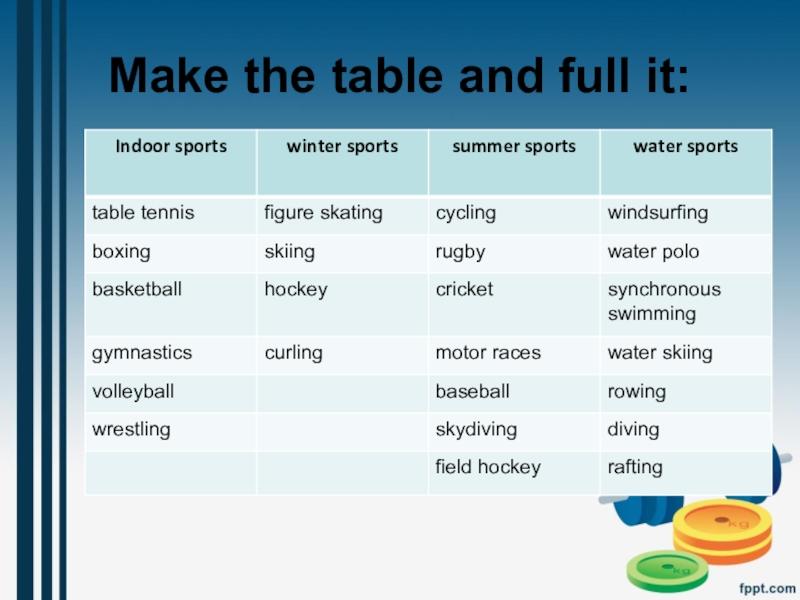
Box lacrosse nets are markedly downsized compared to field lacrosse goals. Youth box goals land around 3 feet wide x 3 feet tall. Professional men’s lacrosse goals max out around 4 feet wide and 4 feet high. The goals for pro women’s competition widen to 4.5 feet across with 4 feet of height. White nylon netting is standard for visibility during play. Steel pipe construction enables folding brackets that make the goals portable for indoor use. Investing in regulation portable lacrosse goals with wheeled bags simplifies transportation for practices and games.
Official Box Lacrosse Balls
Indoor lacrosse balls differ from field lacrosse balls to optimize play on hard surfaces. Weighing 5-5.25 ounces, box balls are slightly heftier for controlled passing and shooting in tight spaces. The rubber spheres measure 7.75 – 8 inches in circumference, with a bounce durometer around 65. The combination of weight and firmness produces true ball movement off the boards, replicating live gameplay. Using a ball engineered for box lacrosse gives players the authentic feel to hone indoor skills.
Box Lacrosse Stick Heads
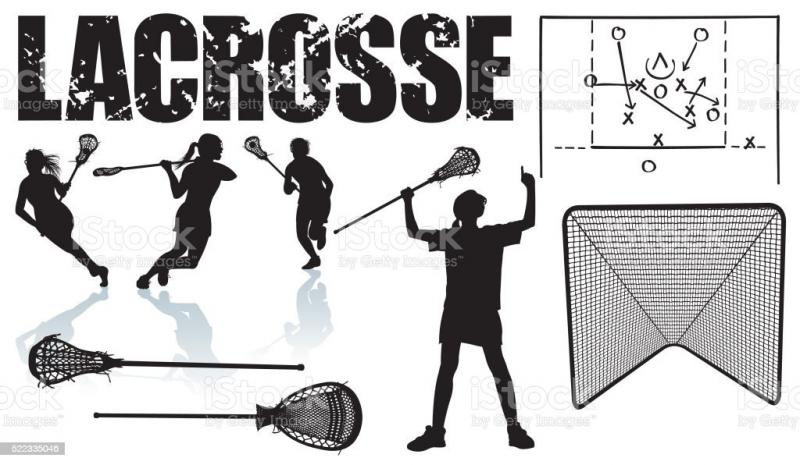
Box lacrosse demands specialized heads to flourish in heavy traffic. Open scoop ends and defined sidewalls optimize ball control for picking up ground balls. More string holes around the scoop allow customized pocket lacing patterns. Closed sidewalls offer expert handlers the ultimate command, while open sidewalls suit defensive players’ checking needs. Offset heads shift the sidewall to one direction, enabling close play at the net. Box lacrosse heads must measure 6-8 inches at their widest point. Durable yet lightweight materials like plastic and fibreglass composite lend speed.
Footwear for Indoor Traction
Quality footwear lends stability when making cuts near the boards. Lacrosse shoes for indoor play feature minimal cleat studs or flat soles to grip turf surfaces. Uppers combining synthetic leather and breathable mesh resist scuffs from board contact. An internal shank supports the arch when pivoting and changing directions rapidly. High-top or mid shoes stabilize the ankle against rolls or tweaks. Durable toe caps protect feet from stray balls and checks. While many players opt for soccer or court shoes, crosstrainers built for box lacrosse’s unique demands optimize traction and support.
Box lacrosse places intense demands on gear with its tight confines and physical play. Ensuring equipment like helmets, nets, and shoes meet regulations provides players with the means to perform at their peak. Stepping into the indoor lacrosse season fully outfitted with the essentials allows athletes to focus on skill rather than gear.
Shoes With Grip For Box Lacrosse Maneuverability
As autumn winds blow, thoughts turn to transitioning gear for indoor lacrosse. While field and box lacrosse share common bonds, key variations in spatial confines, physical play, and style of game necessitate tailored equipment. From grippy shoes to protective helmets, we’ve outlined the must-have box lacrosse gear for optimized performance and safety this season.
Box Lacrosse Helmet
In box lacrosse, specialized helmets are mandated to guard against hard hits. Rounded helmet shells are engineered to deflect ball contact from tight checking and shots in congested areas. Robust chin straps keep the helmet firmly in place when jostling with opponents along the boards. Padding is essential – look for thick foam or gel lining around the jaw and chin, as face shots are frequent with box style play. Top box lacrosse helmets use high-tech materials to absorb heavy collisions while weighing only 1.5-2 lbs. Durable face masks made of steel or titanium alloy blend strength with lightweight wearability.
Correctly Sized Lacrosse Sticks
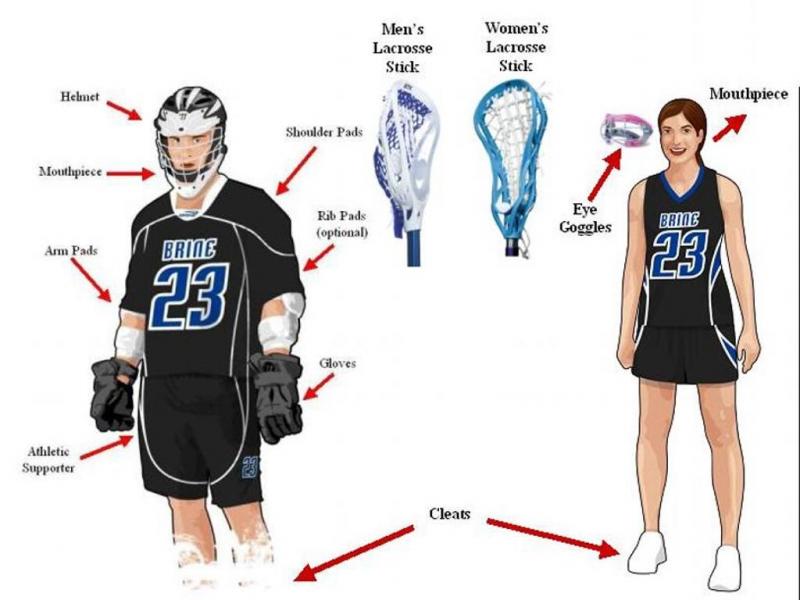
Excelling with a lacrosse stick in compact spaces demands optimized design. Box lacrosse stick heads run narrower at 4-5 inches across, letting players cradle the ball tightly. Handles range 30-40 inches long, facilitating poke checks and scoops in traffic near the boards. Heads feature defined sidewalls with deep pockets for expert ball control. Offensive players like closed sidewalls with nylon strings while defenders opt for open sidewalls and leather lacing. Having a field and indoor stick catered to your position and playing style is crucial.
Ball Stop Netting
A ball stopper net is a vital training tool for indoor lacrosse. Setting up the netting behind a goal or rebounder catches errant shots, eliminating constant ball retrieval that disrupts reps. Heavy-duty polyester or nylon material in a square shape about 6 feet wide by 6 feet tall contains even the most off-target throws. Printed targets provide visual feedback to tighten shooting precision. Foldable designs ensure portable setup for practice anywhere.
Regulation Box Lacrosse Goals

In contrast to field lacrosse, box lacrosse nets are downsized. Youth goals measure around 3 feet wide by 3 feet tall. Pro men’s goals land at 4 feet wide and 4 feet high. Professional women’s goals expand to 4.5 feet wide by 4 feet tall. White nylon netting allows maximum visibility. Steel pipe construction enables collapsible brackets for easy portability indoors. Investing in regulation portable box goals with bag wheels simplifies transport.
Official Indoor Lacrosse Balls
Indoor lacrosse balls are constructed to optimize play on hard surfaces. Weighing 5-5.25 ounces, box balls feel slightly heavier for controlled passing and shooting in confined areas. The balls measure 7.75-8 inches in circumference, with a bounce durometer of about 65. This combination produces true ball reaction off boards, replicating live gameplay. Using a ball designed for box lacrosse provides that authentic indoor feel.
Box Lacrosse Stick Heads
Box lacrosse places demands on heads to excel in congested zones. Open scoops and defined sidewalls maximize ground ball pickup. More string holes around the scoop permit customized pocket patterns. Closed sidewalls offer elite handlers ultimate command, while open sidewalls suit defenders’ checking needs. Offset heads shift the sidewall to one side for tight play at the net. Box heads must be 6-8 inches at their widest point. Durable yet lightweight materials like plastic and composite optimize speed.
Indoor Lacrosse Shoes
Proper footwear lends stability when cutting sharply near boards. Shoes for box lacrosse feature minimal cleat studs or flat soles to stick to turf surfaces. Synthetic leather or mesh uppers resist scuffs from board battles. An internal shank supports arches when swiftly pivoting and changing direction. Many players opt for mid or high-top styles to stabilize ankles against rolls. Durable toe caps shield feet from stray balls and checks. While some players wear soccer or court shoes, crosstrainers built for box lacrosse’s demands optimize traction and support.
Box lacrosse tests gear with tight spaces and physicality. Ensuring equipment like helmets, goals, and footwear meets regulations gives players the means to excel. Stepping into indoor lacrosse season fully equipped allows athletes to focus on skills rather than gear concerns.
Lacrosse Ball Stopper Nets – A Must Have
The chill in the air signals lacrosse players to start transitioning equipment for indoor play. While field and box lacrosse share common bonds, variations in space, physicality, and style of play require tailored gear for optimal performance. From sturdy helmets to ball stopper nets, we’ve compiled the key box lacrosse equipment you need to feel prepared when hitting the court this season.
Protective Box Lacrosse Helmets
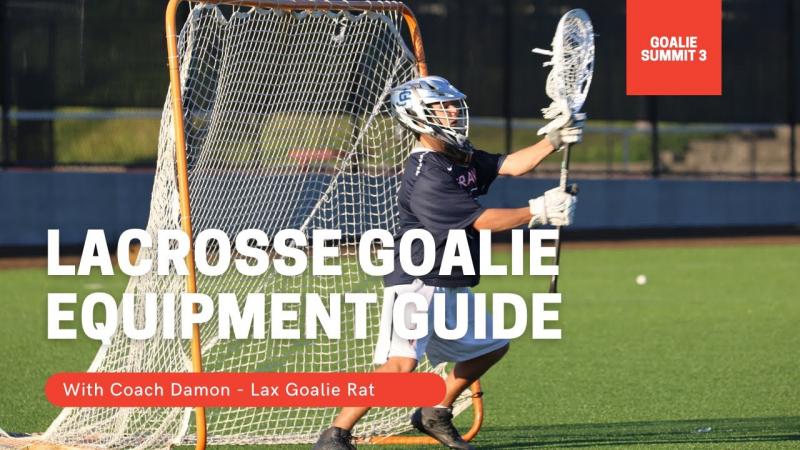
In box lacrosse, specialized helmets are mandated to protect against hard hits. Rounded shells are designed to deflect ball contact from tight checking in high-traffic zones. Rigid chin straps keep the helmet firmly in place during physical play along the boards. Robust padding is crucial – look for ample foam or gel lining around the jaw and chin, as facial shots are common with indoor style play. Advanced box lacrosse helmets utilize high-tech materials to absorb impact while weighing just 1.5-2 lbs. Durable face masks made of steel or titanium alloy blend strength and lightweight wearability.
Correctly Fitted Lacrosse Sticks
Excelling with a lacrosse stick in tight spaces requires optimized design. Box lacrosse stick heads run more narrow at 4-5 inches wide, letting players cradle the ball snugly. Handles range from 30-40 inches long, enabling poke checks and scoops in crowded areas by the boards. Heads have defined sidewalls and deep pockets for expert indoor ball control. Offensive players favor closed sidewalls with nylon strings while defenders choose open sidewalls and leather lacing. Having a field and indoor stick tailored to your position and style is key.
Lacrosse Ball Stopper Netting
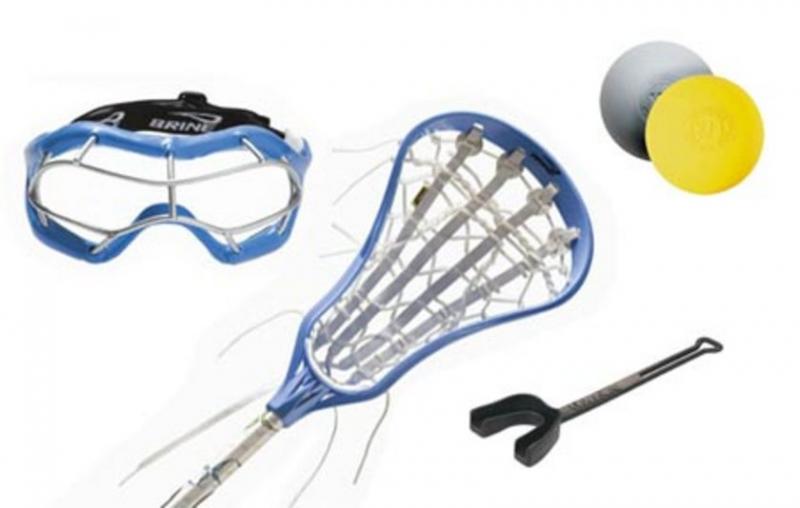
A ball stopper net is an essential training tool for box lacrosse. Setting up the netting behind a goal or rebounder snags errant shots, eliminating constant ball chasing that disrupts skill repetitions. Heavy-duty polyester or nylon material in a square shape approximately 6 feet wide by 6 feet tall contains even the most inaccurate throws. Printed target zones provide visual feedback to tighten shooting precision. Foldable designs ensure portable setup for practice anywhere.
Official Box Lacrosse Goal Dimensions
Contrasting field lacrosse, box lacrosse nets are compact in size. Youth goals measure around 3 feet wide by 3 feet tall. Professional men’s goals come in at 4 feet wide and 4 feet high. Pro women’s goals size up to 4.5 feet wide by 4 feet tall. White nylon netting maximizes visibility. Steel pipe construction enables collapsible brackets for straightforward portability. Investing in regulation portable box goals with bag wheels streamlines transportation.
Regulation Indoor Lacrosse Ball Specs
Indoor lacrosse balls are engineered to optimize play on hard surfaces. Weighing 5-5.25 ounces, box balls feel slightly heavier for controlled passing and shooting in tight spaces. The balls measure 7.75-8 inches in circumference, with a bounce durometer of approximately 65. This combination produces true ball reaction off boards, replicating live gameplay. Using a ball designed for box lacrosse provides that authentic indoor feel.
Box Lacrosse Stick Heads
Box lacrosse demands specialized heads to thrive in packed zones. Open scoops and defined sidewalls amplify ground ball pickups. More string holes around the scoop allow customized pocket patterns. Closed sidewalls give elite handlers maximum control, while open sidewalls suit defenders’ checking needs. Offset heads shift the sidewall to one side for tight play at the net. Box heads must be 6-8 inches at their widest point. Durable yet lightweight materials like plastic and composite optimize speed.
Traction Shoes for Indoor Maneuvering
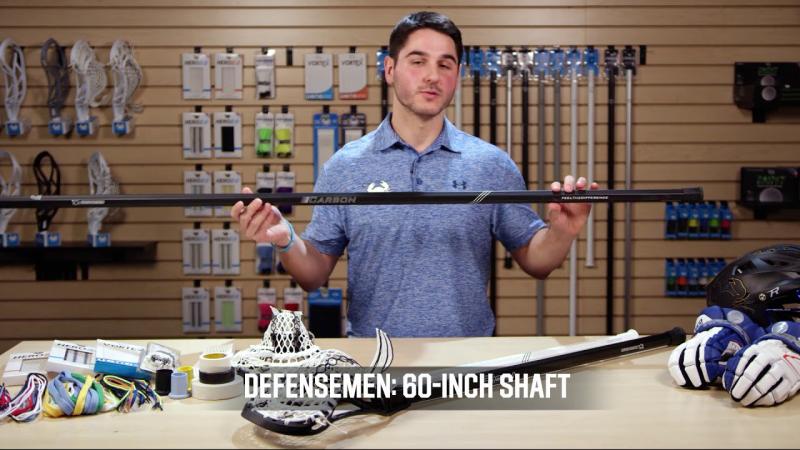
Proper footwear provides stability when cutting hard near boards. Shoes for box lacrosse have minimal cleat studs or flat soles to grip turf surfaces. Synthetic leather or mesh uppers resist scuffs from board battles. An internal shank supports arches when swiftly pivoting and changing direction. Many players choose mid or high-top styles to stabilize ankles against rolls. Durable toe caps protect feet from stray balls and checks. While some opt for soccer or court shoes, crosstrainers built for box lacrosse’s demands enhance traction and support.
Box lacrosse tests gear with tight spaces and physicality. Ensuring equipment like helmets, nets, and shoes meet regulations empowers players to excel. Entering indoor lacrosse season fully equipped allows focusing on skills rather than gear concerns.
Box Lacrosse Gloves For Control And Protection
As cooler weather arrives, lacrosse players start the transition to indoor equipment. While field and box lacrosse share similarities, variations in spatial confines, physical play, and style of game necessitate tailored gear for optimal performance. From durable gloves to ball stopper nets, we’ve compiled the essential box lacrosse equipment you need to feel prepared for intense indoor play this season.
Protective Box Lacrosse Helmets
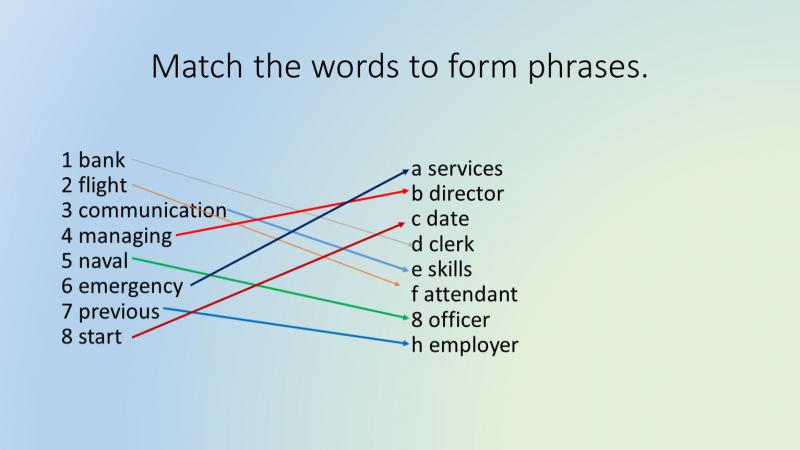
In box lacrosse, specialized helmets are required to protect against hard contact. Rounded shells are engineered to deflect ball strikes from tight checking in congested areas. Rigid chin straps keep the helmet firmly in place during physical play along the boards. Ample padding is critical – look for thick foam or gel lining around the jaw and chin, as facial shots are frequent with indoor style play. Advanced box lacrosse helmets use high-tech materials to absorb impacts while weighing just 1.5-2 lbs. Durable face masks made of steel or titanium alloy blend strength and lightweight wearability.
Properly Fitted Lacrosse Sticks
Excelling with a lacrosse stick in confined spaces demands optimized design. Box lacrosse stick heads are more narrow at 4-5 inches wide, letting players cradle the ball tightly. Handles range from 30-40 inches long, allowing poke checks and scoops in crowded zones by the boards. Heads feature defined sidewalls and deep pockets for expert indoor ball control. Offensive players favor closed sidewalls with nylon strings while defenders opt for open sidewalls and leather lacing. Having a field and indoor stick tailored to your specs and style is vital.
Lacrosse Ball Stopper Nets
A ball stopper net is a vital training aid for box lacrosse. Setting up the netting behind a goal or rebounder snags errant shots, eliminating constant ball chasing that disrupts skill building. Heavy-duty polyester or nylon material in a square shape about 6 feet wide by 6 feet tall contains even the most inaccurate throws. Printed target zones provide visual feedback to tighten shooting accuracy. Foldable designs enable portable setup for practice anywhere.
Regulation Box Lacrosse Goal Sizing
Contrasting field lacrosse, box lacrosse nets are more compact. Youth goals measure around 3 feet wide by 3 feet tall. Pro men’s goals come in at 4 feet wide and 4 feet high. Professional women’s goals expand to 4.5 feet wide by 4 feet tall. White nylon netting maximizes visibility. Steel pipe construction enables collapsible brackets for straightforward portability. Investing in regulation portable box goals with wheeled bags simplifies transportation.
Official Indoor Lacrosse Ball Specifications
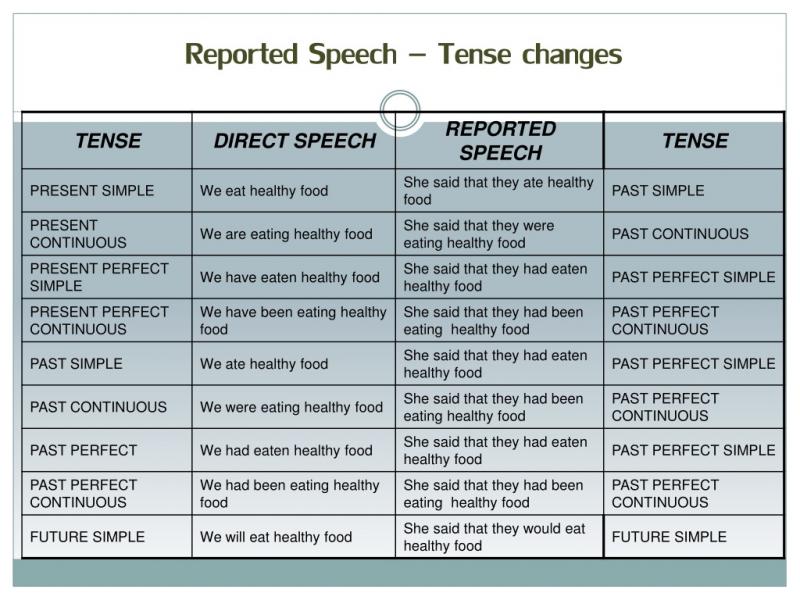
Indoor lacrosse balls are designed to optimize play on hard surfaces. Weighing 5-5.25 ounces, box balls feel slightly heavier for controlled passing and shooting in confined spaces. The balls measure 7.75-8 inches in circumference, with a bounce durometer of about 65. This combination produces true ball reaction off boards, replicating live gameplay. Using a ball engineered for box lacrosse provides that authentic indoor feel.
Specialized Box Lacrosse Stick Heads
Box lacrosse places demands on heads to excel in packed zones. Open scoops and defined sidewalls amplify ground ball pickups. More string holes around the scoop allow customized pocket patterns. Closed sidewalls give elite handlers maximum control, while open sidewalls suit defenders’ checking needs. Offset heads shift the sidewall to one side for tight play at the net. Box heads must be 6-8 inches at their widest point. Durable yet lightweight materials like plastic and composite optimize speed.
Box Lacrosse Gloves
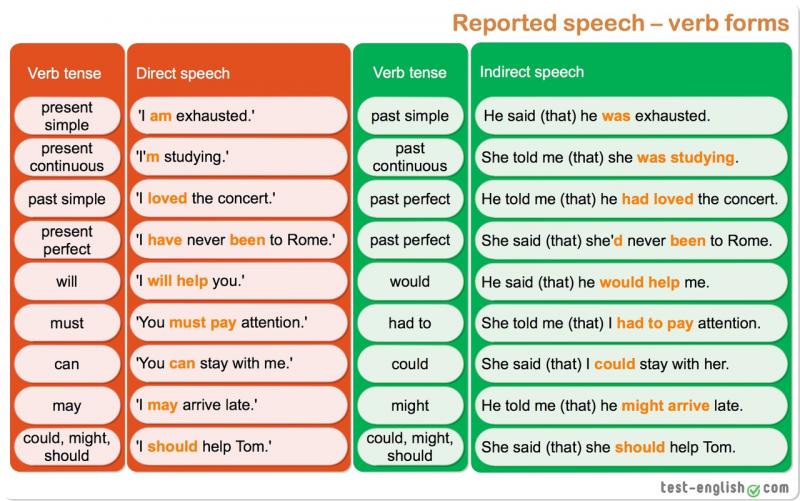
Quality lacrosse gloves lend superior control and impact protection during indoor play. Leather, nylon, and spandex blend flexibility with ventilation. Thermoplastic rubberized padding shields fingers and backs of hands from checks while maintaining feel. Silicone dots on palms and fingertips optimize grip of both stick and ball. Wrist cuffs should fit snugly to keep gloves in place. While some players opt for hockey gloves, crosse-specific gloves engineered for box lacrosse’s demands provide optimized dexterity.
Box lacrosse challenges gear with confined space and physicality. Ensuring equipment like gloves, helmets, and nets meet regulations empowers players to excel. Entering the indoor season fully equipped allows focusing on skills rather than gear concerns.
Lacrosse Arm Pads And Shoulder Pads For Safety
As cooler weather sets in, lacrosse players begin transitioning equipment for indoor play. While field and box lacrosse share common bonds, variations in spatial confines, physicality, and style of game warrant tailored gear for optimal performance. From protective pads to ball stopper nets, we’ve outlined the must-have box lacrosse equipment you need to feel prepared for intense indoor competition this season.
Protective Box Lacrosse Helmets
In box lacrosse, specialized helmets are mandated to protect against hard contact. Rounded shells are engineered to deflect ball strikes from tight checking in congested zones. Rigid chin straps keep the helmet firmly in place during physical play along the boards. Robust padding is essential – look for ample foam or gel lining around the jaw and chin, as facial shots are frequent with indoor style play. Advanced box lacrosse helmets utilize high-tech materials to absorb impacts while weighing just 1.5-2 lbs. Durable face masks made of steel or titanium alloy blend strength and lightweight wearability.
Correctly Fitted Lacrosse Sticks
Thriving with a lacrosse stick in confined spaces requires optimized design. Box lacrosse stick heads are more narrow at 4-5 inches wide, letting players cradle the ball tightly. Handles range from 30-40 inches long, allowing poke checks and scoops in crowded areas by the boards. Heads have defined sidewalls and deep pockets for expert indoor ball control. Offensive players favor closed sidewalls with nylon strings while defenders opt for open sidewalls and leather lacing. Having a field and indoor stick tailored to your specs and style is vital.
Lacrosse Ball Stopper Nets
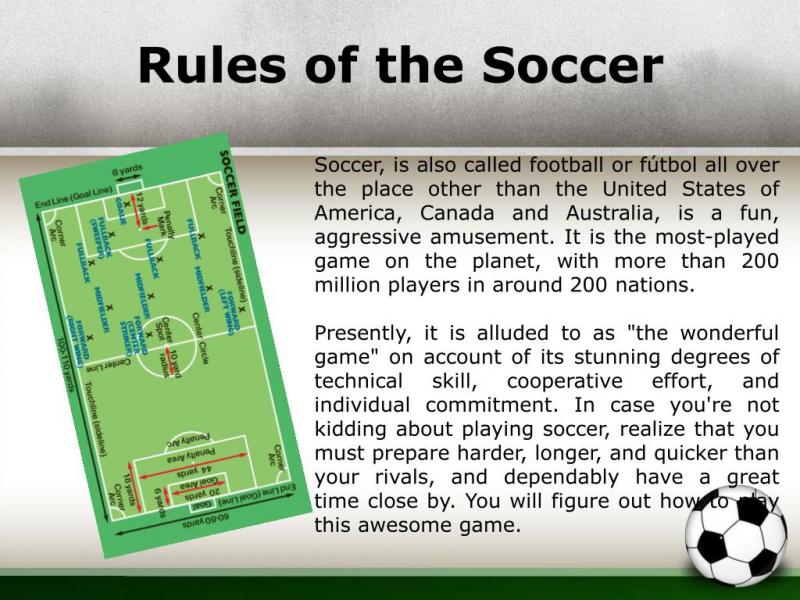
A ball stopper net is an indispensable training tool for box lacrosse. Setting up the netting behind a goal or rebounder catches errant shots, eliminating constant ball chasing that disrupts skill development. Heavy-duty polyester or nylon material in a square shape about 6 feet wide by 6 feet tall contains even the most inaccurate throws. Printed targets provide visual feedback to tighten shooting precision. Foldable designs ensure portable setup for practice anywhere.
Official Box Lacrosse Goal Dimensions
Contrasting field lacrosse, box lacrosse nets are compact in size. Youth goals measure around 3 feet wide by 3 feet tall. Pro men’s goals come in at 4 feet wide and 4 feet high. Professional women’s goals expand to 4.5 feet wide by 4 feet tall. White nylon netting maximizes visibility. Steel pipe construction enables collapsible brackets for easy portability. Investing in regulation portable box goals with bag wheels simplifies transportation.
Regulation Indoor Lacrosse Ball Specs

Indoor lacrosse balls are designed to optimize play on hard surfaces. Weighing 5-5.25 ounces, box balls feel slightly heavier for controlled passing and shooting in tight spaces. The balls measure 7.75-8 inches in circumference, with a bounce durometer of about 65. This combination produces true ball reaction off boards, replicating live gameplay. Using a ball engineered for box lacrosse provides that authentic indoor feel.
Specialized Box Lacrosse Stick Heads
Box lacrosse places demands on heads to excel in packed zones. Open scoops and defined sidewalls amplify ground ball pickups. More string holes around the scoop allow customized pocket patterns. Closed sidewalls give elite handlers maximum control, while open sidewalls suit defenders’ checking needs. Offset heads shift the sidewall to one side for tight play at the net. Box heads must be 6-8 inches at their widest point. Durable yet lightweight materials like plastic and composite optimize speed.
Lacrosse Arm and Shoulder Pads
Protective pads mitigate injury risk during intense indoor play. Hard caps on shoulder pads diffuse checks’ impact while lightweight materials retain range of motion. Bicep and elbow pads feature compression sleeves with padded flex zones to protect against slashes while promoting natural movement. Molded gloves with robust cuffs integrate with arm pads for full coverage. While padding adds bulk, engineered box lacrosse protective gear provides critical impact protection.
Box lacrosse challenges gear with tight confines and physicality. Ensuring equipment like pads, helmets, and nets meet regulations empowers players to excel. Entering the indoor season fully equipped allows focusing on skills rather than gear concerns.
Lacrosse Rib Pads For Vital Midsection Protection
As cooler weather arrives, lacrosse players begin the transition to indoor equipment. While field and box lacrosse share similarities, variations in confined spaces, physical play, and style of game mandate tailored gear for optimized performance. From rib pads to ball stopper nets, we’ve outlined the essential box lacrosse equipment you need to feel prepared for intense indoor play this season.
Protective Box Lacrosse Helmets

In box lacrosse, specialized helmets are required to protect against hard contact. Rounded shells are engineered to deflect ball strikes from tight checking in congested zones. Rigid chin straps keep the helmet firmly in place during physical play along the boards. Ample padding is critical – look for thick foam or gel lining around the jaw and chin, as facial shots are common with indoor style play. Advanced box lacrosse helmets use high-tech materials to absorb impacts while weighing just 1.5-2 lbs. Durable face masks made of steel or titanium alloy blend strength and lightweight wearability.
Correctly Fitted Lacrosse Sticks
Excelling with a lacrosse stick in confined spaces demands optimized design. Box lacrosse stick heads run narrower at 4-5 inches wide, letting players cradle the ball tightly. Handles range from 30-40 inches long, allowing poke checks and scoops in crowded zones by the boards. Heads feature defined sidewalls with deep pockets for expert indoor ball control. Offensive players favor closed sidewalls with nylon strings while defenders opt for open sidewalls and leather lacing. Having a field and indoor stick tailored to your specs and style is vital.
Lacrosse Ball Stopper Nets
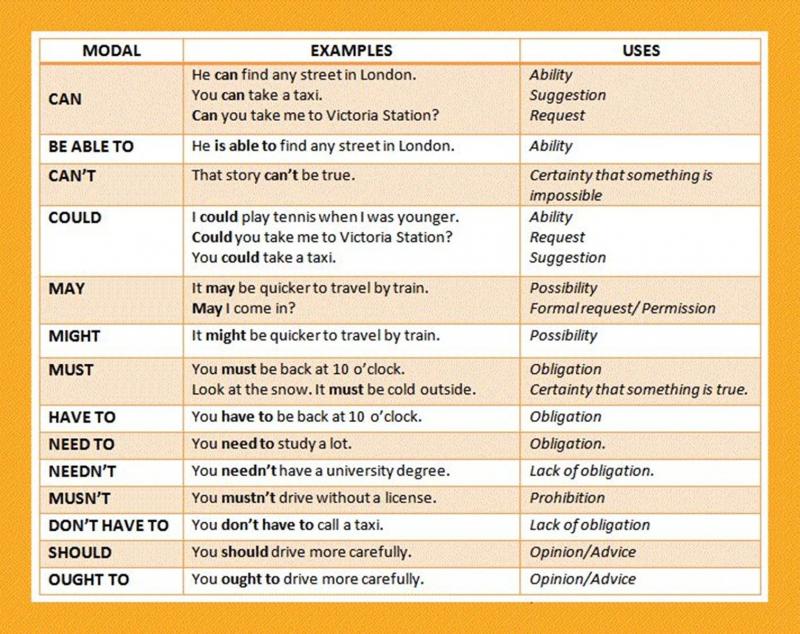
A ball stopper net is an essential training tool for box lacrosse. Setting up the netting behind a goal or rebounder catches errant shots, eliminating constant ball chasing that disrupts skill building. Heavy-duty polyester or nylon material in a square shape about 6 feet wide by 6 feet tall contains even the most inaccurate throws. Printed targets provide visual feedback to tighten shooting precision. Foldable designs ensure portable setup for practice anywhere.
Official Box Lacrosse Goal Dimensions
Contrasting field lacrosse, box lacrosse nets are compact in size. Youth goals measure around 3 feet wide by 3 feet tall. Pro men’s goals come in at 4 feet wide and 4 feet high. Professional women’s goals expand to 4.5 feet wide by 4 feet tall. White nylon netting maximizes visibility. Steel pipe construction enables collapsible brackets for straightforward portability. Investing in regulation portable box goals with wheeled bags simplifies transportation.
Regulation Indoor Lacrosse Ball Specs
Indoor lacrosse balls are engineered to optimize play on hard surfaces. Weighing 5-5.25 ounces, box balls feel slightly heavier for controlled passing and shooting in tight spaces. The balls measure 7.75-8 inches in circumference, with a bounce durometer of about 65. This combination produces true ball reaction off boards, replicating live gameplay. Using a ball designed for box lacrosse provides that authentic indoor feel.
Specialized Box Lacrosse Stick Heads
Box lacrosse demands specialized heads to excel in packed zones. Open scoops and defined sidewalls amplify ground ball pickups. More string holes around the scoop allow customized pocket patterns. Closed sidewalls give elite handlers maximum control, while open sidewalls suit defenders’ checking needs. Offset heads shift the sidewall to one side for tight play at the net. Box heads must be 6-8 inches at their widest point. Durable yet lightweight materials like plastic and composite optimize speed.
Lacrosse Rib Pads

Rib pads are vital for protecting the vulnerable core area during box lacrosse play. Lightweight, breathable designs allow free movement while defending ribs from bruising checks. Some rib pads feature integrated core muscle support belts to reduce injury risk while enhancing power. For field players, stretchy shirts with built-in padded rib guards provide protection without restricting motion. While adding bulk, lacrosse rib pads mitigate pain and injury from the unavoidable blows of indoor play.
Box lacrosse tests gear with tight confines and physicality. Ensuring equipment like rib pads, helmets, and nets meet regulations empowers players to excel. Entering the indoor season fully equipped allows focusing on skills rather than gear concerns.
Lacrosse Cups/Supporters For Groin Protection
As cooler weather arrives, lacrosse players begin transitioning equipment for indoor play. While field and box lacrosse share similarities, variations in spatial confines, physical contact, and style of game mandate tailored gear for optimized performance. From cups to ball stopper nets, we’ve compiled the essential box lacrosse equipment you need to feel prepared for intense indoor competition this season.
Protective Box Lacrosse Helmets

In box lacrosse, specialized helmets are required to protect against hard hits. Rounded shells are engineered to deflect ball strikes from tight checking in congested zones. Rigid chin straps keep the helmet firmly in place during physical play along the boards. Ample padding is critical – look for thick foam or gel lining around the jaw and chin, as facial shots are frequent with indoor style play. Advanced box lacrosse helmets use high-tech materials to absorb impacts while weighing just 1.5-2 lbs. Durable face masks made of steel or titanium alloy blend strength and lightweight wearability.
Correctly Fitted Lacrosse Sticks
Thriving with a lacrosse stick in confined spaces demands optimized design. Box lacrosse stick heads run narrower at 4-5 inches wide, letting players cradle the ball tightly. Handles range from 30-40 inches long, allowing poke checks and scoops in crowded areas by the boards. Heads feature defined sidewalls with deep pockets for expert indoor ball control. Offensive players favor closed sidewalls with nylon strings while defenders opt for open sidewalls and leather lacing. Having a field and indoor stick tailored to your specs and style is vital.
Lacrosse Ball Stopper Nets
A ball stopper net is an indispensable training tool for box lacrosse. Setting up the netting behind a goal or rebounder catches errant shots, eliminating constant ball chasing that disrupts skill building. Heavy-duty polyester or nylon material in a square shape about 6 feet wide by 6 feet tall contains even the most inaccurate throws. Printed targets provide visual feedback to tighten shooting precision. Foldable designs ensure portable setup for practice anywhere.
Official Box Lacrosse Goal Dimensions
Contrasting field lacrosse, box lacrosse nets are compact in size. Youth goals measure around 3 feet wide by 3 feet tall. Pro men’s goals come in at 4 feet wide and 4 feet high. Professional women’s goals expand to 4.5 feet wide by 4 feet tall. White nylon netting maximizes visibility. Steel pipe construction enables collapsible brackets for straightforward portability. Investing in regulation portable box goals with wheeled bags simplifies transportation.
Regulation Indoor Lacrosse Ball Specs

Indoor lacrosse balls are designed to optimize play on hard surfaces. Weighing 5-5.25 ounces, box balls feel slightly heavier for controlled passing and shooting in tight spaces. The balls measure 7.75-8 inches in circumference, with a bounce durometer of about 65. This combination produces true ball reaction off boards, replicating live gameplay. Using a ball engineered for box lacrosse provides that authentic indoor feel.
Specialized Box Lacrosse Stick Heads
Box lacrosse demands specialized heads to thrive in packed zones. Open scoops and defined sidewalls amplify ground ball pickups. More string holes around the scoop allow customized pocket patterns. Closed sidewalls give elite handlers maximum control, while open sidewalls suit defenders’ checking needs. Offset heads shift the sidewall to one side for tight play at the net. Box heads must be 6-8 inches at their widest point. Durable yet lightweight materials like plastic and composite optimize speed.
Lacrosse Cups/Supporters
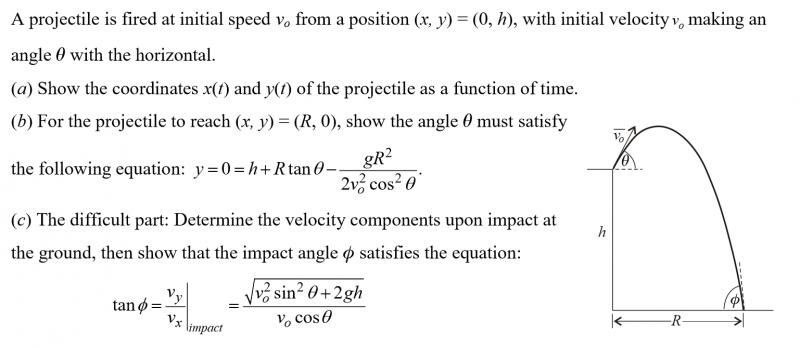
Protective cups are essential for shielding the groin from blows during indoor lacrosse play. Impact-resistant designs made of steel, carbon fiber, or dense polymer absorb shock. Compression shorts with built-in pocketed pouches secure the cup. While supporters add bulk, an athletically fitted groin protector safeguards a vulnerable yet vital area from the rigors of box style game play.
Box lacrosse challenges gear with tight confines and physicality. Ensuring equipment like cups, helmets, and nets meet regulations empowers players to excel. Entering the indoor season fully equipped allows focusing on skills rather than gear concerns.
Lacrosse Mouthguards To Prevent Injuries
As cooler weather arrives, lacrosse players begin transitioning equipment for indoor play. While field and box lacrosse share common bonds, variations in spatial confines, physical contact, and style of game warrant tailored gear for optimal performance. From mouthguards to ball stopper nets, we’ve outlined the must-have box lacrosse equipment you need to feel prepared for intense indoor competition this season.
Protective Box Lacrosse Helmets
In box lacrosse, specialized helmets are mandated to protect against hard hits. Rounded shells are engineered to deflect ball strikes from tight checking in congested zones. Rigid chin straps keep the helmet firmly in place during physical play along the boards. Robust padding is essential – look for thick foam or gel lining around the jaw and chin, as facial shots are frequent with indoor style play. Advanced box lacrosse helmets utilize high-tech materials to absorb impacts while weighing just 1.5-2 lbs. Durable face masks made of steel or titanium alloy blend strength and lightweight wearability.
Correctly Fitted Lacrosse Sticks
Excelling with a lacrosse stick in confined spaces demands optimized design. Box lacrosse stick heads run narrower at 4-5 inches wide, letting players cradle the ball tightly. Handles range from 30-40 inches long, allowing poke checks and scoops in crowded areas by the boards. Heads feature defined sidewalls with deep pockets for expert indoor ball control. Offensive players favor closed sidewalls with nylon strings while defenders opt for open sidewalls and leather lacing. Having a field and indoor stick tailored to your specs and style is vital.
Lacrosse Ball Stopper Nets

A ball stopper net is an indispensable training aid for box lacrosse. Setting up the netting behind a goal or rebounder catches errant shots, eliminating constant ball chasing that disrupts skill building. Heavy-duty polyester or nylon material in a square shape about 6 feet wide by 6 feet tall contains even the most inaccurate throws. Printed targets provide visual feedback to tighten shooting precision. Foldable designs ensure portable setup for practice anywhere.
Official Box Lacrosse Goal Dimensions
Contrasting field lacrosse, box lacrosse nets are compact in size. Youth goals measure around 3 feet wide by 3 feet tall. Pro men’s goals come in at 4 feet wide and 4 feet high. Professional women’s goals expand to 4.5 feet wide by 4 feet tall. White nylon netting maximizes visibility. Steel pipe construction enables collapsible brackets for straightforward portability. Investing in regulation portable box goals with wheeled bags simplifies transportation.
Regulation Indoor Lacrosse Ball Specs
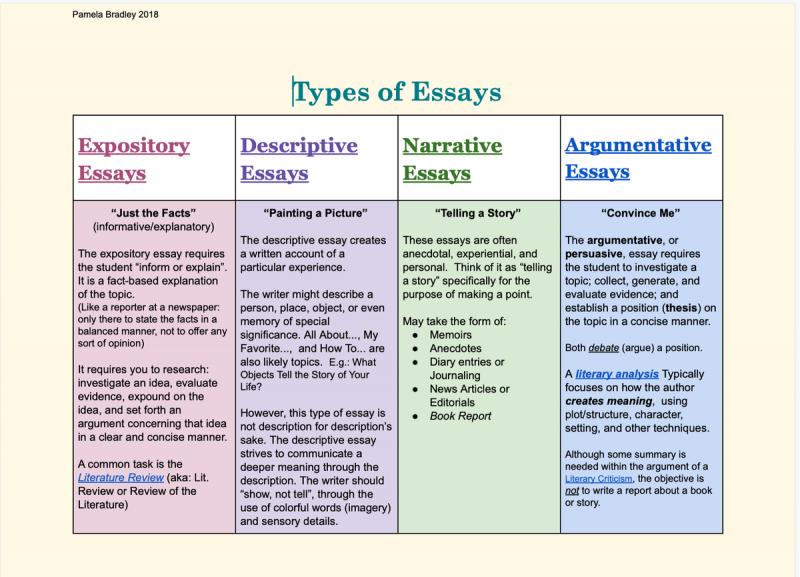
Indoor lacrosse balls are engineered to optimize play on hard surfaces. Weighing 5-5.25 ounces, box balls feel slightly heavier for controlled passing and shooting in tight spaces. The balls measure 7.75-8 inches in circumference, with a bounce durometer of about 65. This combination produces true ball reaction off boards, replicating live gameplay. Using a ball designed for box lacrosse provides that authentic indoor feel.
Specialized Box Lacrosse Stick Heads
Box lacrosse demands specialized heads to thrive in packed zones. Open scoops and defined sidewalls amplify ground ball pickups. More string holes around the scoop allow customized pocket patterns. Closed sidewalls give elite handlers maximum control, while open sidewalls suit defenders’ checking needs. Offset heads shift the sidewall to one side for tight play at the net. Box heads must be 6-8 inches at their widest point. Durable yet lightweight materials like plastic and composite optimize speed.
Lacrosse Mouthguards
Mouthguards are mandatory for preventing dental and mouth injuries during intense indoor play. Custom-fit designs molded to players’ teeth offer the best shock absorption and protection. Some mouthguards feature ventilation slots for enhanced breathing and comfort. Colors and team logos allow personalization. While basic boil-and-bite guards work, investing in a custom athletic mouthguard optimized for lacrosse’s demands provides superior protection.
Box lacrosse challenges gear with tight confines and physicality. Ensuring equipment like mouthguards, helmets, and nets meet regulations empowers players to excel. Entering the indoor season fully equipped allows focusing on skills rather than gear concerns.
Lacrosse Mesh For Accurate Shot Control
As cooler weather arrives, lacrosse players begin transitioning equipment for indoor play. While field and box lacrosse share common bonds, variations in spatial confines, physical contact, and style of game warrant tailored gear for optimal performance. From lacrosse mesh to ball stopper nets, we’ve outlined the must-have box lacrosse equipment you need to feel prepared for intense indoor competition this season.
Protective Box Lacrosse Helmets
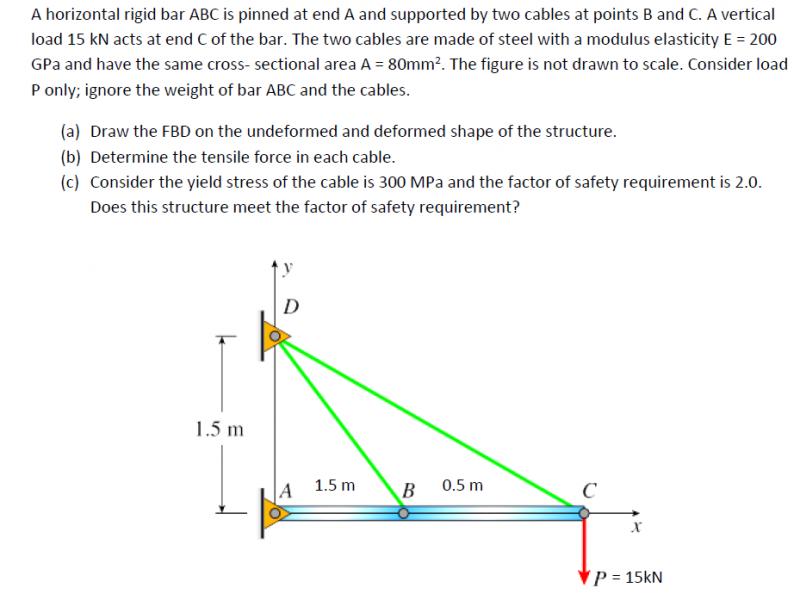
In box lacrosse, specialized helmets are mandated to protect against hard hits. Rounded shells are engineered to deflect ball strikes from tight checking in congested zones. Rigid chin straps keep the helmet firmly in place during physical play along the boards. Robust padding is essential – look for thick foam or gel lining around the jaw and chin, as facial shots are frequent with indoor style play. Advanced box lacrosse helmets utilize high-tech materials to absorb impacts while weighing just 1.5-2 lbs. Durable face masks made of steel or titanium alloy blend strength and lightweight wearability.
Correctly Fitted Lacrosse Sticks
Excelling with a lacrosse stick in confined spaces demands optimized design. Box lacrosse stick heads run narrower at 4-5 inches wide, letting players cradle the ball tightly. Handles range from 30-40 inches long, allowing poke checks and scoops in crowded areas by the boards. Heads feature defined sidewalls with deep pockets for expert indoor ball control. Offensive players favor closed sidewalls with nylon strings while defenders opt for open sidewalls and leather lacing. Having a field and indoor stick tailored to your specs and style is vital.
Lacrosse Ball Stopper Nets
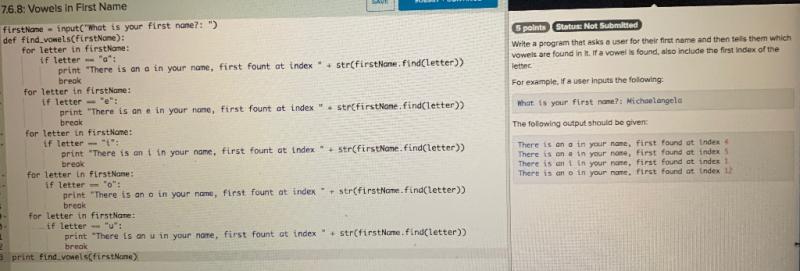
A ball stopper net is an indispensable training aid for box lacrosse. Setting up the netting behind a goal or rebounder catches errant shots, eliminating constant ball chasing that disrupts skill building. Heavy-duty polyester or nylon material in a square shape about 6 feet wide by 6 feet tall contains even the most inaccurate throws. Printed targets provide visual feedback to tighten shooting precision. Foldable designs ensure portable setup for practice anywhere.
Official Box Lacrosse Goal Dimensions
Contrasting field lacrosse, box lacrosse nets are compact in size. Youth goals measure around 3 feet wide by 3 feet tall. Pro men’s goals come in at 4 feet wide and 4 feet high. Professional women’s goals expand to 4.5 feet wide by 4 feet tall. White nylon netting maximizes visibility. Steel pipe construction enables collapsible brackets for straightforward portability. Investing in regulation portable box goals with wheeled bags simplifies transportation.
Regulation Indoor Lacrosse Ball Specs
Indoor lacrosse balls are engineered to optimize play on hard surfaces. Weighing 5-5.25 ounces, box balls feel slightly heavier for controlled passing and shooting in tight spaces. The balls measure 7.75-8 inches in circumference, with a bounce durometer of about 65. This combination produces true ball reaction off boards, replicating live gameplay. Using a ball designed for box lacrosse provides that authentic indoor feel.
Specialized Box Lacrosse Stick Heads
Box lacrosse demands specialized heads to thrive in packed zones. Open scoops and defined sidewalls amplify ground ball pickups. More string holes around the scoop allow customized pocket patterns. Closed sidewalls give elite handlers maximum control, while open sidewalls suit defenders’ checking needs. Offset heads shift the sidewall to one side for tight play at the net. Box heads must be 6-8 inches at their widest point. Durable yet lightweight materials like plastic and composite optimize speed.
Lacrosse Mesh

Stringing lacrosse stick heads with mesh optimizes ball control for indoor shooting and passing. Synthetic nylon or polyester interwoven netting improves accuracy with uniform pocket tension. Variations like soft or hard meshes suit player style – soft for better ball feel and hard for more rebound. Shooting strings threaded through diamond patterned mesh enhance ball grip and aim. Mesh with a mid to high pocket placement gives offensive players a sweet spot for sinking shots on goal. Optimal lacrosse mesh transforms sticks into accurate extensions of players’ hands.
Box lacrosse tests gear with tight confines and physicality. Ensuring equipment like mesh, helmets, and nets meet regulations empowers players to excel. Entering the indoor season fully equipped allows focusing on skills rather than gear concerns.
Lacrosse Tape For Grip and Stick Durability
As cooler weather arrives, lacrosse players begin transitioning equipment for indoor play. While field and box lacrosse share common bonds, variations in spatial confines, physical contact, and style of game warrant tailored gear for optimal performance. From lacrosse tape to ball stopper nets, we’ve outlined the must-have box lacrosse equipment you need to feel prepared for intense indoor competition this season.
Protective Box Lacrosse Helmets
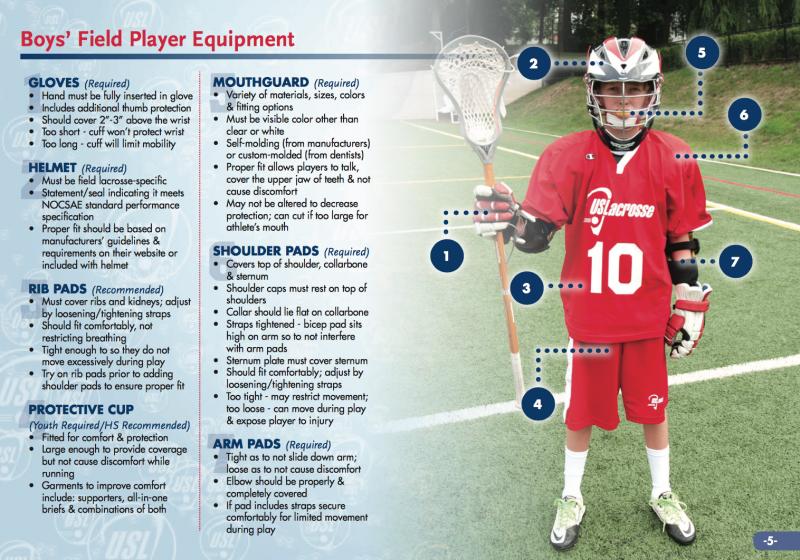
In box lacrosse, specialized helmets are mandated to protect against hard hits. Rounded shells are engineered to deflect ball strikes from tight checking in congested zones. Rigid chin straps keep the helmet firmly in place during physical play along the boards. Robust padding is essential – look for thick foam or gel lining around the jaw and chin, as facial shots are frequent with indoor style play. Advanced box lacrosse helmets utilize high-tech materials to absorb impacts while weighing just 1.5-2 lbs. Durable face masks made of steel or titanium alloy blend strength and lightweight wearability.
Correctly Fitted Lacrosse Sticks
Excelling with a lacrosse stick in confined spaces demands optimized design. Box lacrosse stick heads run narrower at 4-5 inches wide, letting players cradle the ball tightly. Handles range from 30-40 inches long, allowing poke checks and scoops in crowded areas by the boards. Heads feature defined sidewalls with deep pockets for expert indoor ball control. Offensive players favor closed sidewalls with nylon strings while defenders opt for open sidewalls and leather lacing. Having a field and indoor stick tailored to your specs and style is vital.
Lacrosse Ball Stopper Nets
A ball stopper net is an indispensable training aid for box lacrosse. Setting up the netting behind a goal or rebounder catches errant shots, eliminating constant ball chasing that disrupts skill building. Heavy-duty polyester or nylon material in a square shape about 6 feet wide by 6 feet tall contains even the most inaccurate throws. Printed targets provide visual feedback to tighten shooting precision. Foldable designs ensure portable setup for practice anywhere.
Official Box Lacrosse Goal Dimensions
Contrasting field lacrosse, box lacrosse nets are compact in size. Youth goals measure around 3 feet wide by 3 feet tall. Pro men’s goals come in at 4 feet wide and 4 feet high. Professional women’s goals expand to 4.5 feet wide by 4 feet tall. White nylon netting maximizes visibility. Steel pipe construction enables collapsible brackets for straightforward portability. Investing in regulation portable box goals with wheeled bags simplifies transportation.
Regulation Indoor Lacrosse Ball Specs

Indoor lacrosse balls are engineered to optimize play on hard surfaces. Weighing 5-5.25 ounces, box balls feel slightly heavier for controlled passing and shooting in tight spaces. The balls measure 7.75-8 inches in circumference, with a bounce durometer of about 65. This combination produces true ball reaction off boards, replicating live gameplay. Using a ball designed for box lacrosse provides that authentic indoor feel.
Specialized Box Lacrosse Stick Heads
Box lacrosse demands specialized heads to thrive in packed zones. Open scoops and defined sidewalls amplify ground ball pickups. More string holes around the scoop allow customized pocket patterns. Closed sidewalls give elite handlers maximum control, while open sidewalls suit defenders’ checking needs. Offset heads shift the sidewall to one side for tight play at the net. Box heads must be 6-8 inches at their widest point. Durable yet lightweight materials like plastic and composite optimize speed.
Lacrosse Tape
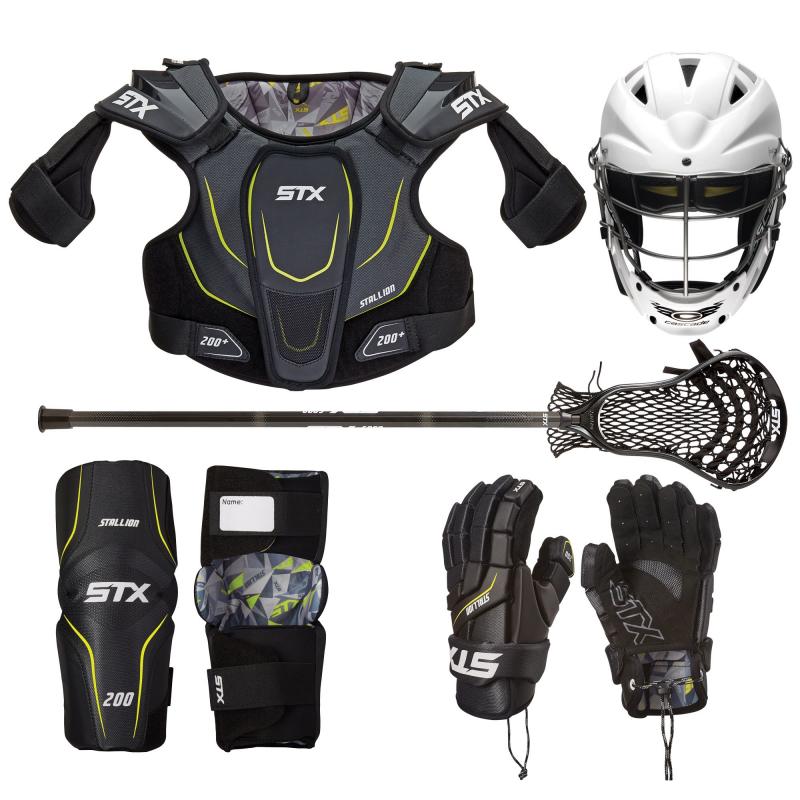
Applying tape to lacrosse stick handles improves grip and control needed for box style play. Stretchy athletic tape with added texture prevents slippage when maneuvering checks. Waterproof tape maintains stick grip in cold indoor settings prone to condensation. Taping over mesh pockets strengthens durability against board checks. Unique tape colors and patterns allow players to customize sticks. Regularly rewrapping tape preserves optimal grip and tackiness. The right lacrosse tape transforms handles into anti-slip extensions of players’ hands.
Box lacrosse challenges gear with tight confines and physicality. Ensuring equipment like tape, helmets, and nets meet regulations empowers players to excel. Entering the indoor season fully equipped allows focusing on skills rather than gear concerns.